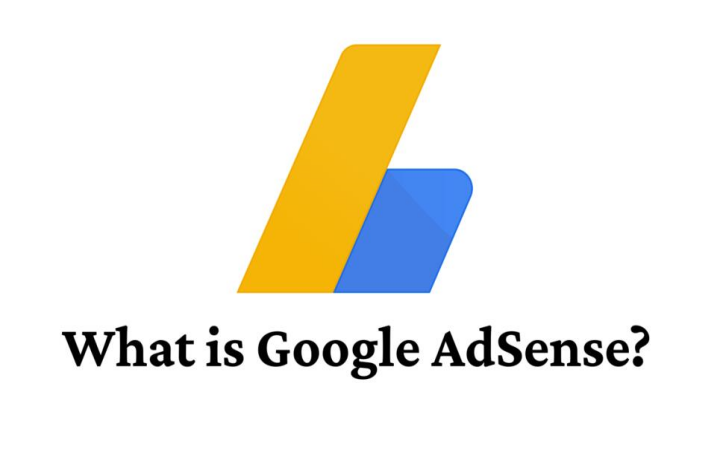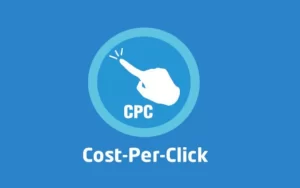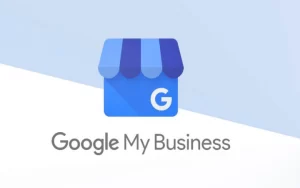Your blog can be a gold mine if you opt for Google AdSense. It is the easiest and the most efficient way to convert your website into a regular revenue source. Can you even imagine that you can make money while doing something you truly adore—writing and sharing your content with your fans? This complete step-by-step manual will introduce you to all the information on Google AdSense and explain how it can turn your desire for financial prosperity into reality.

What is Google AdSense?
Google AdSense is a program managed by Google. Google targets its ads to your site according to its sites and gets a fraction of the revenue every time a website visitor clicks them. The format of the ads used also comes into account. Thereby, the website owner’s job is simplified. Google handles ad placement and the payment of fees. Do you need to install its software and paste some code into your website? Google AdSense is a delicious option for a lot of bloggers.
How Does Google AdSense Work?
The central role of suppliers is to pay Google to show their advertisements on their servers. On the other hand, publishers like yourself, who volunteer to display the ads on their sites, reap the benefits of this collaboration. Google’s contextual targeting algorithm is then utilized to show ads related to topics visitors seek; thus, they are highly relevant to the site’s visitors.
The Application Process
To become a part of the AdSense program, you have to:
- Sign Up: Sign up for AdSense on the Google AdSense website.
- Submit Your Website: Add the URL of the website to be monetized.
- Verification: Google examines your application to ensure your site meets its helplines.
- Approval: After the approval, your ad will be already live on your website!
Requirements
- Excellent original content is a requirement.
- Comply with Google’s content criteria.
- Enough visitors
- Using a reader-friendly design
Types of Google AdSense ads
Regarding ad quality, Google AdSense has done great work citing various ad formats for every content and user type. Below are the formats that contain the classified ads as you select:
- Text Ads: A list of text is given here that can also contain a title, description, and a link. They are very adaptable and can easily be integrated with other content.
- Display Ads are high-image or video ads containing images, videos, or rich media. They are on the side to get the user’s attention.
- Responsive Ads: These allow users to fit or adjust the ad in any way, be it the size, look, or format, to serve the best user experience for any device or screen size.
- Link Units: These small advertising units show a list of topics that are relevant to your site’s content and the topics. Users click on the links, which then appear as more specific ads.
- Matched Content: It helps you keep users on the site by promoting your media through related content. The recommendation domes are the criteria that describe these ads.
Pros and Cons of Google AdSense
Although the review of Google AdSense reveals its strengths and weaknesses, you will discover whether it is the most appropriate monetization method for your blog at once.
Pros
- Simplicity: Even beginners find it easy to use and manage.
- Passive Income: Make money without selling products or services actively.
- Variety of Ads: You can choose various formats to suit your content.
- Trustworthy Platform: The product is safe and well-constructed because of Google’s robust infrastructure and support.
- Scalable: A fan grows with the traffic and more content your blog develops.
Cons
- Strict Policies: Off-siding Google’s policies can suspend your account.
- Revenue Variability: Earnings can be affected when users have fewer views and worse ad performance.
- Ad Clutter: The excessive use of ad space can lead to a decrease in user experience.
The Benefits of Advertising on Your Website
Unlike the superficial attraction of money, web advertising promotes many other additional pluses. Here are some significant advantages:
- Paid for Writing: Convert your blog into a lucrative business by making the most out of your already created content.
- Enhanced User Experience: Meaningful ads can positively impact your guests by displaying them with products and services they like.
- Contribution of Engagement: Carefully included ads expose the user to your site and thus attain involvement.
- Brand Partnerships: Proper implementation of Google AdSense is a magnet to companies seeking partnerships and events.
- SEO Perks: Prime-quality ads can increase your site’s visibility in search engine results by raising the time visitors spend on your site and decreasing the bounce rate.
How to Use Google AdSense – for Beginners
Step 1: Create Quality Content
One essential element of running a successful AdSense campaign is creating high-quality content. Thus, a beginner needs to ensure the existence of high-quality content.
Why Quality Matters
Google prioritizes user experience. Good content, such as one that presents facts, engages, and is valuable, will attract more visitors and increase the likelihood of getting AdSense approval.
Tips for Creating Quality Content
- Focus on Your Niche: When you write about subjects you are really into, writing boring stuff will take a lot of work. This way, you can write content tailored to your audience.
- Utilize SEO Best Practices: For many webmasters, the keyword “Digital Advertising” for titles, headings, and bodies of articles works for them. Consequently, it ensures better visibility on the search engine results page.
- Interact with Your Readers: You should attract more reader participation by asking your readers to comment and share on various social platforms.
Step 2: Creating an AdSense Account
With high-quality content, the next logical step is to get an AdSense account.
How to Sign Up
- Go to the AdSense Website: Google AdSense has a direct link to sign up, so go over there and click “Sign Up Now.”
- Fill in Your Website URL and Email: You must provide the URL of the page on which you would like to be earned and your email address.
- Complete the Application: This will lead you to the Interface where you can complete your application, including your payment information and contact details.
Step 3: Wait for Approval
When you complete the registration process, you will receive a confirmation email and await Google’s response.
What to Expect
- Review Period: The approval process can last several days to a few weeks. However, it may be as short as two days or as long as two weeks. During this period, Google will analyze your site’s material and check its conformity to its operating methods.
- Approval Notification: You will receive an email with information about whether your application has been approved or declined.
Tips for Increasing Approval Chances
- Ensure Compliance: Before anything else, you must adhere to the terms of your site’s Google AdSense policy.
- Check Your Site’s Navigation: Be a person and feel it with your visitors’ possibilities. Are the menus easy to find and use? And all the links work?
Step 4: Start Showing Ads
How to Implement Ads
- Access Your AdSense Account: Sign in to AdSense and click on “Ads” in the left-hand menu.
- Create Ad Units: You can select ads to display by picking ad types and formats. You can modify the ads’ appearance, size, and position to match your site’s design.
- Add the Ad Code to Your Site: A copy will be generated. You should then paste the ad code into the HTML of your site where the ads have to be displayed.
Best Practices for Ad Placement
- Place ads in the most notable points, above the fold, inside the content, or on the sidebar.
- Don’t distract customers with too much of anything. Stick to the mantra of creating products or services with a user-friendly layout.
Step 5: Activate Your AdSense Account
You must confirm your AdSense account by validating your money matters to start earning.
How to Verify Your Account
- Address Verification: Google requires that you provide your home mailbox number so that a personal identification number can be sent. Key in your PIN in the provided space of the AdSense account to confirm your mailing address.
- Payment Method: The payment method you prefer will be the one you will associate with the “Payments” segment of your AdSense account.
What Affects Your Income from Google AdSense?
Several things influence your earnings from Google AdSense. Knowing these can supercharge your ad revenue:
- Traffic Volume: A significant number of visitors often directly translates to more ads viewed, which means more money in your pocket.
- Ad Placement: The placement of ads plays a very significant role regarding click-through rates.
- Content Quality: Top-quality, up-to-date content piques people’s curiosity, and they take an interest in your company through communication with the ads.
- Niche: A part of the market with high CPC rates is the niche others generally refer to.
- Geography: The groups of people from different parts of the world may have distinct CPC rates.
Strategies to Increase Your Google Adsense Revenue

Publish High-Quality Content Regularly
High-quality material is vital to a working AdSense; we play games to make money. Releasing well-thought-out, compelling, and informative content at regular intervals ensures your visibility, and the reader will honour you by staying on your site for a longer time and, more importantly, becoming your loyal follower.
Get to know them better and make them aware of you through these tips:
- Conduct a Thorough Search: Only ensure the data is accurate and informative.
- Engage Your Audience: Creative headlines and images are a fantastic way to capture readers’ attention.
- Be Regular: Be the same team that fans return to see your posts as often as you can.
Find Out the Earning Keywords
Keywords play a paramount part in calculating your AdSense income. High-earning keywords typically average higher cost-per-click rates. Use resources like Google Keyword Planner to detect these keywords and embed them into your content as if you were having a natural conversation about attire.
How to Identify High-Earning Keywords
- Prioritize long-tail keywords, as they are usually protected from quite a bit of competition and have better-than-average ratios of visitors who turn into buyers.
- Break down the competitors to see which keywords are the ones that are pushing traffic to their websites.
A/B Test Your Ad Units
In A/B testing, you aim to see the impact of different ad types, sizes, and their position compared to CTR and earnings. Consider the following essential points in testing:
- Ad Sizes Variants: See if the minor and smallest ad sizes get the most clicks while the bigger ones do well. Ads of small and big refer to 300×250 and 728×90, although 336×280 will help select the best one.
- Ad Placements: Experiment with three locations, such as the header, within content, or the sidebar, for testing ads.
- Ad Types: Try text ads, display ads, and link units, among other combinations, to find the most profitable ad format targeting your audience.
Utilize Different Ad Formats and Placements
Adjusting your ad formats and placements will influence the income from the ads you are selling. Google AdSense uses such formats, to name a few. These variants are responsive ads, matched content, and in-article ads. Here is how to use them efficiently:
- Responsive Ads automatically change to any screen, making the user’s visit quite convenient.
- Matched Content: This style recommends your site’s content, which, in turn, increases page views and, of course, ad impressions.
- In-article ads contain text, an image matching your content, or a link to the advertiser’s site.
Increase Website Traffic
The more traffic your site gets, the more you will generate advertisement impressions. The following are three of the strategies to boost your website traffic:
- SEO: Optimize your site so search engines can place it at the top. This way, you can get free-of-charge visits from search engine users without paid advertising.
- Social Media Marketing: Share your content across social media platforms to reach a broader audience.
- Email Marketing: Send the recipients periodic newsletters that will be interesting and encourage them to revisit your site.
Improve Webpage Loading Speed
Websites’ user experience and SEO are closely connected to the site’s loading speed. A website that performs efficiently by loading fast will keep visitors engaged. Thus, they are inclined to stay and engage more ad impressions.
Let’s talk about the ways to improve your site’s loading speed first:
- Optimize Images: Make images small enough but retain their quality.
- Use a Content Delivery Network (CDN): To decrease wait times, send a copy of your data to different servers.
- Minimize HTTP Requests: Cut down the amount of design elements or your pages to speed up load times.
Monitor Performance with Google AdSense Reports
Google AdSense allows you to view detailed reports that track your performance regarding ads. Always check these reports to see which way the trend goes and how to improve your performance in the areas you are interested in. Key metrics focusing include:
The most important metrics are the following:
- Click-Through Rate: The share of ad clicks to ad snapshots in per cent is the click-through rate or simply the portion of your visitors engaged with the ads versus those who are not.
- Cost-Per-Click: The amount of money you receive from a click is measured against the cost-per-click.
- Page RPM: The revenue per thousand impressions or page RPM measures your total earnings from these advertisements and provides an overview of your potential earnings.
Common Mistakes to Avoid When Using Google AdSense
Clicking Your Ads
Stop your hands! It is as absurd as it may seem to see the ads and then click on them. Google has lightning-fast tech installations that detect behaviours of this sort, and such clicks can be why your account is banned.
Ignoring Ad Limits
Google AdSense limits the number of ads that can be shown per page. Failure to respect these limitations can result in punishment or prohibition of your account. Stick to the regulations to keep your account secure.
Not Tracking Performance
Not controlling the advertising can limit the amount you can make from your website. The analytics tools provided by Google AdSense allow you to follow them by seeing which pages result in more traffic, experimenting with various sites, etc. Once you have it, check which methods or features contribute positively and adversely to your site, so turn the bad ones off.
FAQs
How Do I Get Approved for Google AdSense?
Applying for Google AdSense
- Improvinginvolves your site’s content
- Complying with the
- Having search giant’s rules a neat and user-friendly layout
You can fill in information through AdSense’s official website and start the approval process.
What are the requirements for applying for Google AdSense?
Google requires several qualifications for your blog, such as having only original and freshly written pieces, observing copyright laws, and having clear identity information easily accessible to users.
Can AdSense work together with other ad networks?
Yes, you can use ads from other networks simultaneously with those from Google AdSense. However, all such third-party ads should be strictly compatible with AdSense policies.
Final Thoughts
For bloggers, Google AdSense is well-known as a valuable tool for diversifying their revenue streams and profiting from PPC ads without searching for a sponsor. By having deep knowledge of how it functions and using effective techniques, one could get the most out of their earnings and, thus, create a very profitable blog.
Do you want to enhance your blog? This has the potential to bring you more audiences and higher income. Do not delay; register now and start making money from your favourite hobby! Happy blogging!


